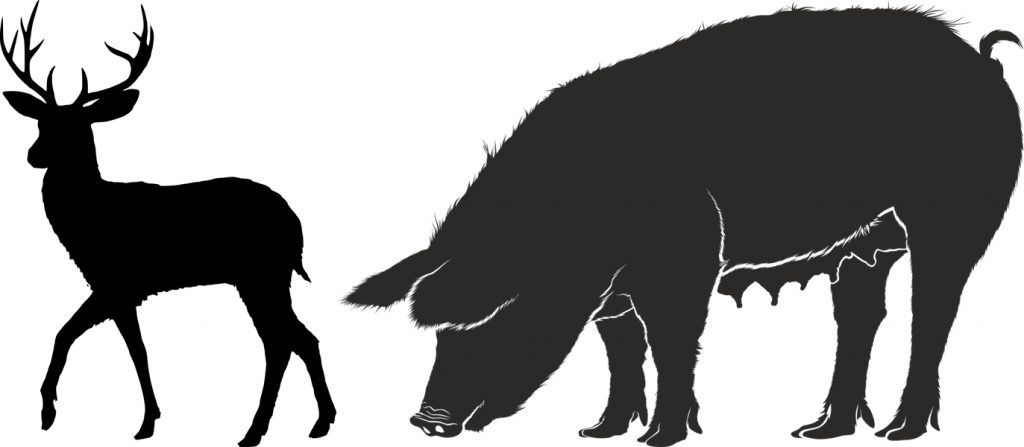Known as “pelanduk” in Malay and Iban, a mouse-deer belongs to the genus Tragulus of even-toed ungulates.
It belongs to the same family of lesser mouse-deer or kancil.
While the lesser mouse-deer is known for its cunning behavior in Indonesian and Malaysian folktales, the Melanau community of Sarawak also have a similar tale about the mouse-deer or pelanduk.
Here is the legend of how a mouse-deer tricked a pig and a deer to save itself recorded by Brooke Low:
There was once a mouse-deer who, during a stroll, fell into a pit. Try as he might, he could not find a way to get out.
Coincidentally, a pig came and spotted the mouse-deer inside the pit. The pig then asked what the mouse-deer was doing down there.
“Oh, don’t you know,” the mouse-deer replied, feigning confidence, “the sky is going to fall in and everyone will be smashed unless he has a hole to hide in.”
After listening to the mouse-deer, the pig leaped in.
The mouse-deer then jumped onto the pig’s back, but he was still not high enough to leap out.
Next came a deer, who also asked the two animals what they were doing in the hole. The mouse-deer told him the same lie.
So, the deer jumped into the hole, afraid that the sky might fall and smash down upon him.
The mouse-deer somehow tricked the deer into standing on top of the pig’s back. The moment they were in the right position, the mouse-deer jumped out from the pit and made it to safety.
Dumbfounded, the pig and the deer finally realised that they were tricked.
Thankfully, the tale doesn’t end here for these two unfortunate animals. In order to escape from the pit, they both scratched the earth along the sides, creating a small mound in the centre. Then, they used the mound to jump out from the hole.
Deer and pig look for vengeance
Once the deer and the pig escaped from the hole, they both vowed to have their revenge. They followed the trail of the mouse-deer and found it standing on top of a tree where a bee’s nest was hanging.
“Come down from the tree because we want to kill you,” said the pig and the deer.
“I can’t, the king has got me to watch his gong,” the mouse-deer answered as it pointed to the bee’s nest.
Excited by the idea that it was the ‘king’s gong’, the deer said it had always wanted to ring it.
“So you may if you let me come down and get at a distance before you strike. The noise would deafen me,” the mouse-deer said.
The moment the deer and the pig allowed it, the mouse-deer came down and ran away to safety.
So the deer took a stick to strike the ‘king’s gong’ and was instantly stung to death by the bees.

The pig and the mouse-deer
Meanwhile, the pig went after the mouse-deer in a rage. And again, the mouse-deer was caught up by the pig.
And again, the mouse-deer climbed up a tree to escape the pig.
The mouse-deer then told the pig that it was now watching the king’s girdle, pointing at something black, long and leathery.
“Now, isn’t it pretty? I never saw a more handsome girdle in my life,” said the mouse-deer.
The pig agreed saying, “How I should like to wear it but for one day.”
“Well, so you may,” said the mouse-deer, “but be careful or you may spoil it.”
The pig gingerly got into the ‘kings’ girdle’, but was then crushed to death by what was, in fact, a cobra.
The mouse-deer then gleefully went on its way after outwitting its enemies.






















